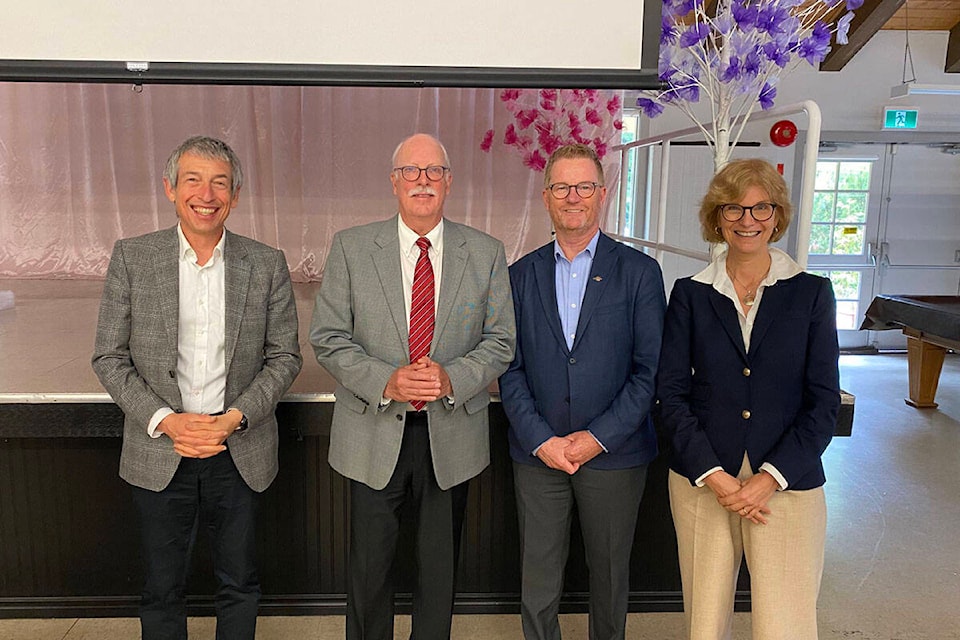Access to geriatric-focused doctors and keeping up with inflation on fixed budgets are two aspects of senior living with room for improvement that come to mind to B.C.’s seniors’ advocate.
To mark Seniors Week, which runs from June 5 to 11, Isobel Mackenzie has been travelling to reconnect in-person with seniors and their organizations and be a ear to their top concerns.
For the first time, general practitioner access is one of the largest issues to be brought up, Mackenzie told Black Press Media.
One-in-five British Columbians are without a family doctor, according to B.C. Family Doctors, an advocacy organization for the profession.
In previous years, seniors told Mackenzie the doctor shortage did not impact them as priority patients – but that is no longer the case. With the number of seniors in the province passing 1 million, doctors are also part of this aging population, Mackenzie said.
“Most seniors had a doctor, and I think most seniors still do,” Mackenzie told Black Press Media. “Many of them had a doctor because they had a doctor for 30 or 40 years, and that doctor has retired and now they cannot find one.”
This recent trend is concerning because people aged 65 and older are more likely to need a family doctor to regularly monitor their chronic conditions, said Mackenzie.
ALSO READ: Volunteers who supported seniors a lasting legacy of pandemic: B.C. seniors advocate
On Friday (June 3), she discussed the future of aging at the KinVillage Community Center in Tsawwassen.
Mackenzie asked all the seniors without a family doctor to raise their hand. She was surprised when about 40 per cent of attendees indicated they had no doctor.
“If I asked that question eight years ago, nobody would have raised their hand.”
Potential solutions to the doctor shortage include paying family doctors more, increasing the number of seats in medical schools and creating paths for foreign trained doctors to practice in Canada. The government could consider pathways for foreign trained doctors to provide care to seniors in limited capacities, like a nurse practitioner, said Mackenzie.
“We also need to keep moving forward on team-based care, that is the future,” Mackenzie said. Team-based care involves connecting a patient with a single clinic, rather than a single doctor.
Other ongoing seniors’ issues often depend on where they live and their social and economic circumstances, said Mackenzie. Affordable renting impacts many low-income seniors in cities, while seniors in rural areas can have trouble finding appropriate housing for their needs.
The government knows the province needs more subsidized housing for seniors, said Mackenzie.
As for income supplements for seniors who rent, the Shelter Aid for Elderly Renters (SAFER) program is a good start, but could be improved by giving larger sums to seniors and opening the eligibility to a wider income threshold, Mackenzie said.
More seniors aged 85 and older live independently in the community, instead of in care homes, than ever before, Mackenzie said. Meanwhile, seniors are on a fixed income, meaning they cannot keep up with the rising costs in the province, as well as pay for services they used to be able to do themselves.
“When we are older, we have to hire people to do things because we are not able to do them anymore. Those costs are rising and finding people [to hire] is difficult,” she said.
“We need to ensure the supports that we offer to people in the community recognize that and not assume the inevitability that everybody is going to move into a nursing home, because that is not factually correct.”
